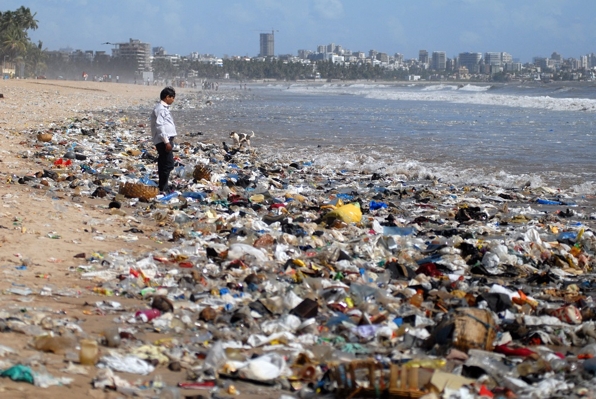Just when you thought it was safe to go back… No. No more ‘Jaws’ references. We’ll just say that a recent article in a respected scientific journal reveals that many brands of sea salt from all over the worlds contain small but possibly significant amounts of ‘microplastics’. But that’s not all…
 Huge ‘tidal wave’ of plastic waste washed up on a beach in India. It’s like this all over Asia.
Huge ‘tidal wave’ of plastic waste washed up on a beach in India. It’s like this all over Asia.
And the Pacific coasts of Canada and the U.S. Northwest are close behind…
In the latest issue of Nature, scientists found microplastics in 17 salt brands originating from 8 different countries. The average content was low, translating to a consumption of just 37 particles per sea salt user per year. But lead author of the report, Ali Karami, says ther are stil many unknowns:
“According to our results, the low level of anthropogenic particles intake from the salts (maximum 37 particles per individual per annum) warrants negligible health impacts. However, to better understand the health risks associated with salt consumption, further development in extraction protocols are needed to isolate [even smaller] anthropogenic particles.”
But there’s more…
Karami and associates note that, since they were first mass-produced after the Second World War, plastics manufacturing and consumption has grown annually, to a high of 322 million tonnes in the last fully-documented year, 2015. Mismanaged waste has found its wan into the environment, notably the seas, where tidal and wave action breaks it down into smaller and smaller particles.
Karami states: “Accordingly, it is expected that products originating from the contaminated water bodies are also loaded with [microplastics]. … Several studies have shown the presence of microplastics in seafood products like clams and fish. Therefore, the consumption of seafood products could be a significant route of exposure to MPs in humans. For instance, top European shellfish consumers are expected to ingest up to 11,000 plastic particles per annum. Microplastics might be of health concern since they have been shown to carry hazardous chemicals and microorganisms.”
This issue may be just emerging. And the development of bio-degradable plastics won’t change the amount of plastic waste that’s already in the environment. So it appears we have a potentially very serious problem with plastic waste in our sea foods.
Something to keep an eye on as time marches on…
~ Maggie J.

